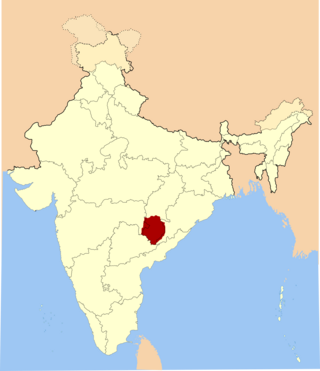Halbi (also Bastari, Halba, Halvas, Halabi, Halvi) is an Eastern Indo-Aryan language, transitional between Odia and Marathi.[2] It is spoken by at least 766,297 people across the central part of India.
| Halbi | |
|---|---|
| हलबी / ହଲବୀ | |
| Native to | India |
| Region | Chhattisgarh, Odisha, Andhra Pradesh, and Maharashtra |
| Ethnicity | Halba |
Native speakers | 766,297 (2011 census)[1] |
| Odia, Devanagari | |
| Language codes | |
| ISO 639-3 | hlb |
| Glottolog | halb1244 Halbi |
| Linguasphere | 59-AAF-tb |
 Halbi-speaking region | |
The Mehari (or Mahari) dialect is mutually intelligible with the other dialects only with difficulty. There are an estimated 200,000 second-language speakers (as of 2001). In Chhattisgarh educated people are fluent in Hindi. Some first language speakers use Bhatri as second language.
Halbi is often used as a trade language, but there is a low literacy rate. It is written in the Odia and Devanagari scripts.[citation needed] It uses SOV word order (subject-object-verb), makes strong use of affixes, and places adjectives before nouns.
Phonology edit
Vowels edit
Halbi has 6 vowels: /i, e, ə, a, o, u/. All vowels show contrastive vowel nasalization.[3]
Consonants edit
| Labial | Alveolar | Retroflex | Palatal | Velar | Glottal | ||
|---|---|---|---|---|---|---|---|
| Nasal | voiced | m | n | (ɳ) | (ɲ) | ŋ | |
| breathy | mʱ | nʱ | |||||
| Stop/ Affricate |
voiceless | p | t | ʈ | tʃ | k | |
| aspirated | pʰ | tʰ | ʈʰ | tʃʰ | kʰ | ||
| voiced | b | d | ɖ | dʒ | g | ||
| breathy | bʱ | dʱ | ɖʱ | dʒʱ | gʱ | ||
| Fricative | s | h | |||||
| Approximant | voiced | ʋ | l | j | |||
| breathy | lʱ | ||||||
| Rhotic | voiced | r | (ɽ) | ||||
| breathy | rʱ | (ɽʱ) | |||||
- /n/ is heard as a palatal [ɲ] when preceding palatal affricates, and as retroflex [ɳ] when before retroflex stops.
- Voiced retroflex stops /ɖ, ɖʱ/ are heard as retroflex flaps [ɽ, ɽʱ] when in word-medial positions.
References edit
- ^ "Statement 1: Abstract of speakers' strength of languages and mother tongues - 2011". www.censusindia.gov.in. Office of the Registrar General & Census Commissioner, India. Retrieved 2018-07-07.
- ^ Masica (1991)
- ^ Kaushikkar, Chitra Vijay (1972). A descriptive analysis of Halbi: An Indo-Aryan language. Poona: Deccan College.